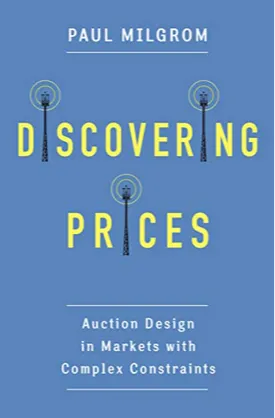Discovering Prices: Auction Design in Markets with Complex Constraints by Paul Milgrom
Auction Design in Markets with Complex Constraints by Paul Milgrom offers a comprehensive look at various auction techniques and their ability to uncover optimal prices in complex markets. This book is an invaluable resource for anyone looking to understand how best to set prices in complex markets and create a more efficient and profitable auction system.
At the core of this book are several important topics, including game theory and its role in auction design; strategic pricing and bidding tactics; and the effects of incentives and information on auction participants. With an intuitive approach and numerous examples, Milgrom provides an in-depth look into how auction design can work in a variety of markets with constraints.
In the first section of the book, Milgrom provides a comprehensive overview of game theory and its application to auction design. He explains the fundamentals of auctions and game theory, including the concept of a Dominant Strategy Equilibrium. He then explains how auction participants can use the irrational behavior of their opponents to their advantage. This includes techniques such as the Vickrey-Clark-Groves mechanism and the simultaneous ascending auction. With these techniques, Milgrom demonstrates how auction participants can use their knowledge of a market to design an optimal auction for their situation.
The second section of the book is focused on the effects of incentives and information on auction participants. Here, Milgrom explains how incentives can manipulate participants’ behavior and even sabotage the auction process. He highlights the importance of understanding the motivations of participants and how they can affect the design and outcome of an auction. He also discusses the effects of incomplete information on the auction process, and how participants with more expertise can use information asymmetry to their advantage.
The next section looks at how strategic pricing and bidding tactics can influence auction results. Milgrom covers different strategies for setting prices, such as open and closed auctions. He also covers various tactics that participants can use to win the auction. These tactics include shill bidding and collusion, among others. The discussion also includes strategies for winning multiple bids, both in a multi-item auction and in a multi-round auction. Ultimately, Milgrom emphasizes the role of auction design in obtaining optimal results.
The final section of the book examines the application of auction design to real-world scenarios. Through examples of complex auction structure design, Milgrom shows how auction design can transform markets and create opportunities for participants. He also explains how auction design can be used to solve complex problems, such as the allocation of scarce resources. In the end, Milgrom proves the value of auction design in creating market efficiency and optimal outcomes.
Overall, Auction Design in Markets with Complex Constraints is essential reading for anyone interested in auction design and its ability to uncover optimal prices in complex markets. With his wealth of knowledge on the subject, Milgrom provides an invaluable resource for anyone looking to understand and benefit from auction design.

